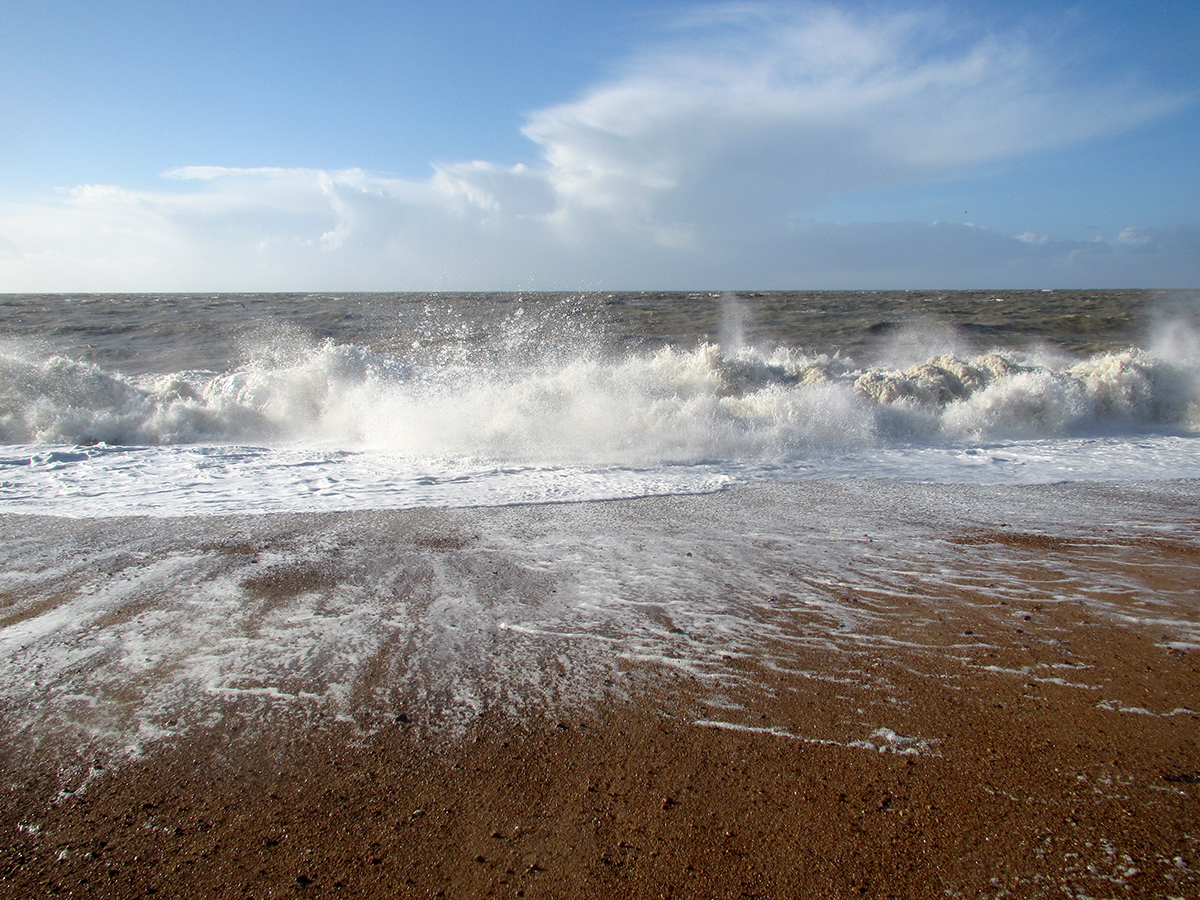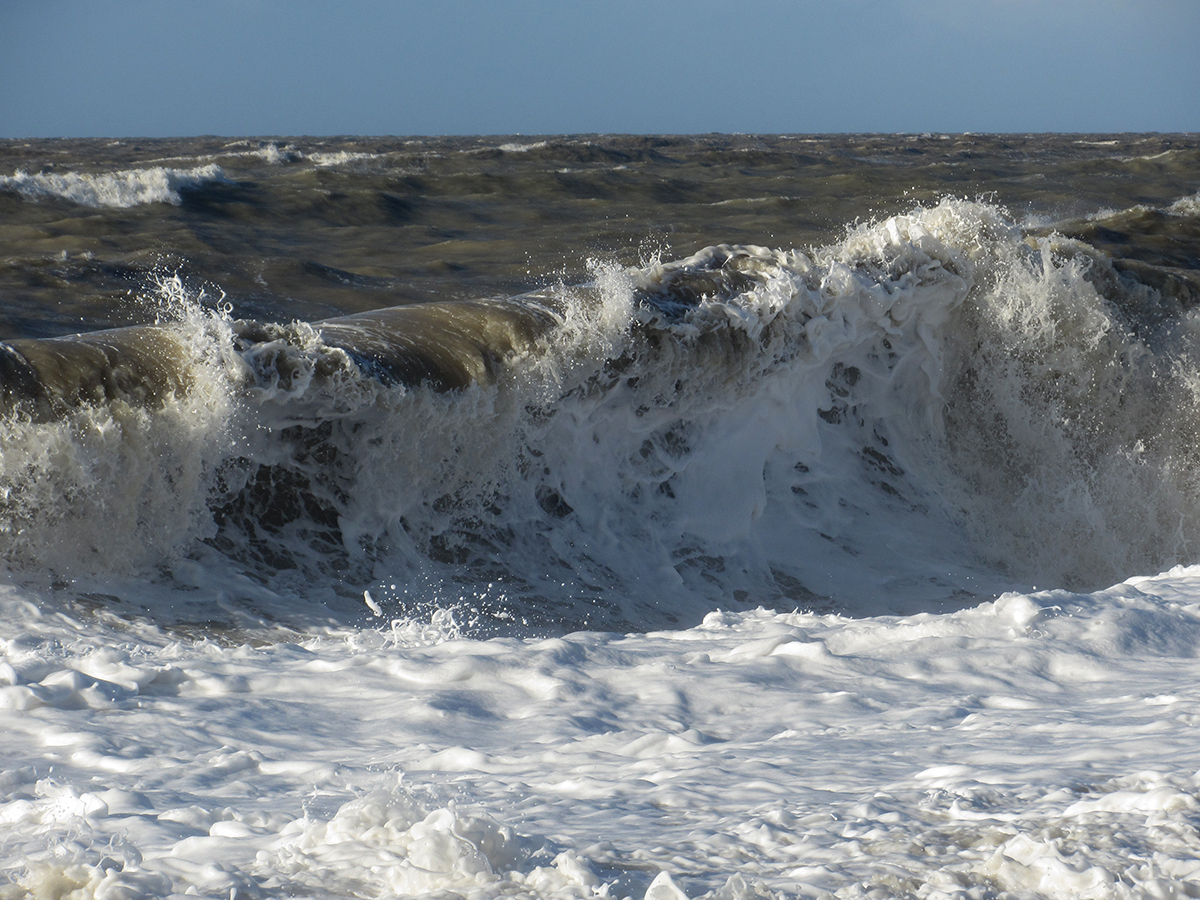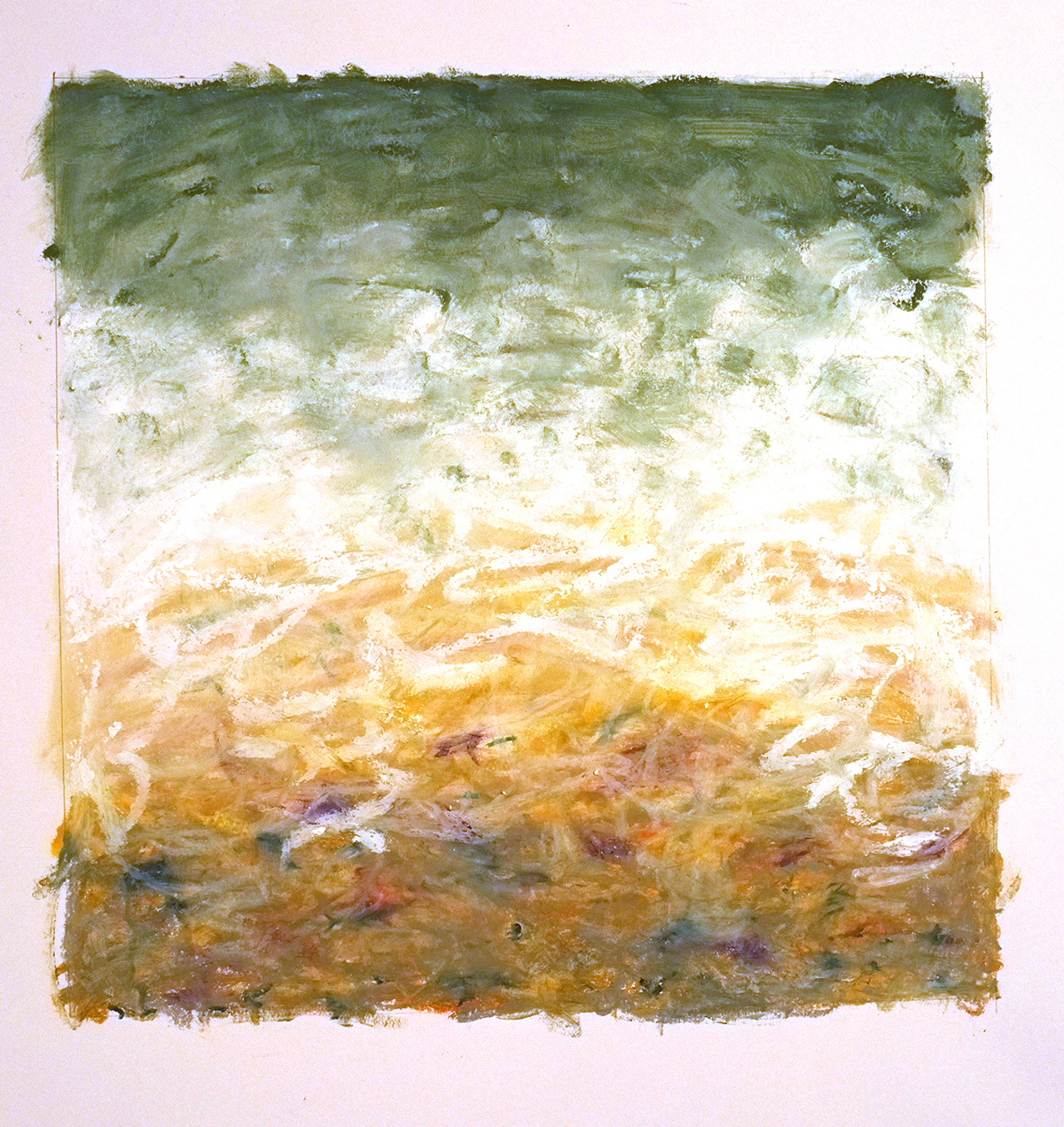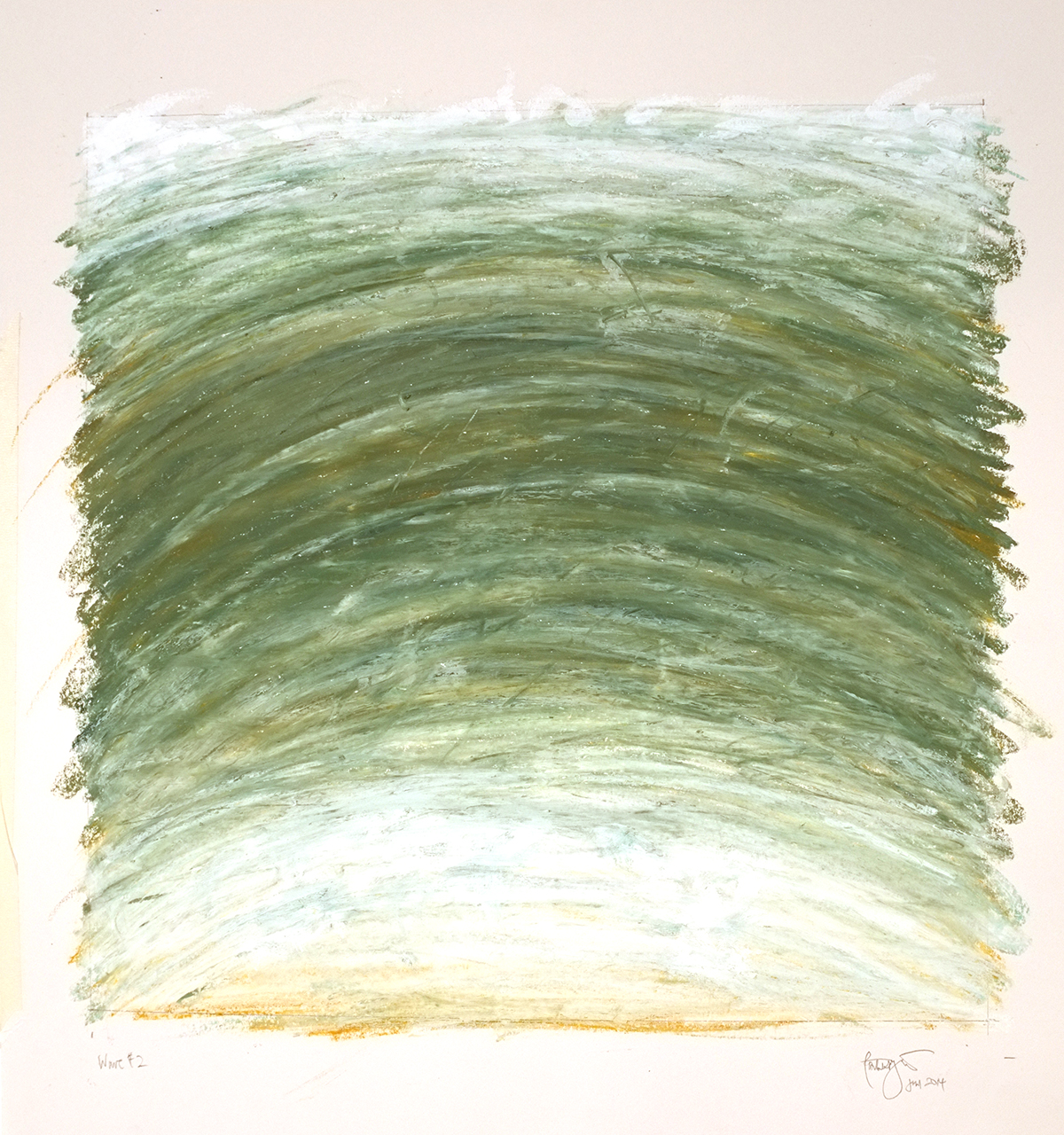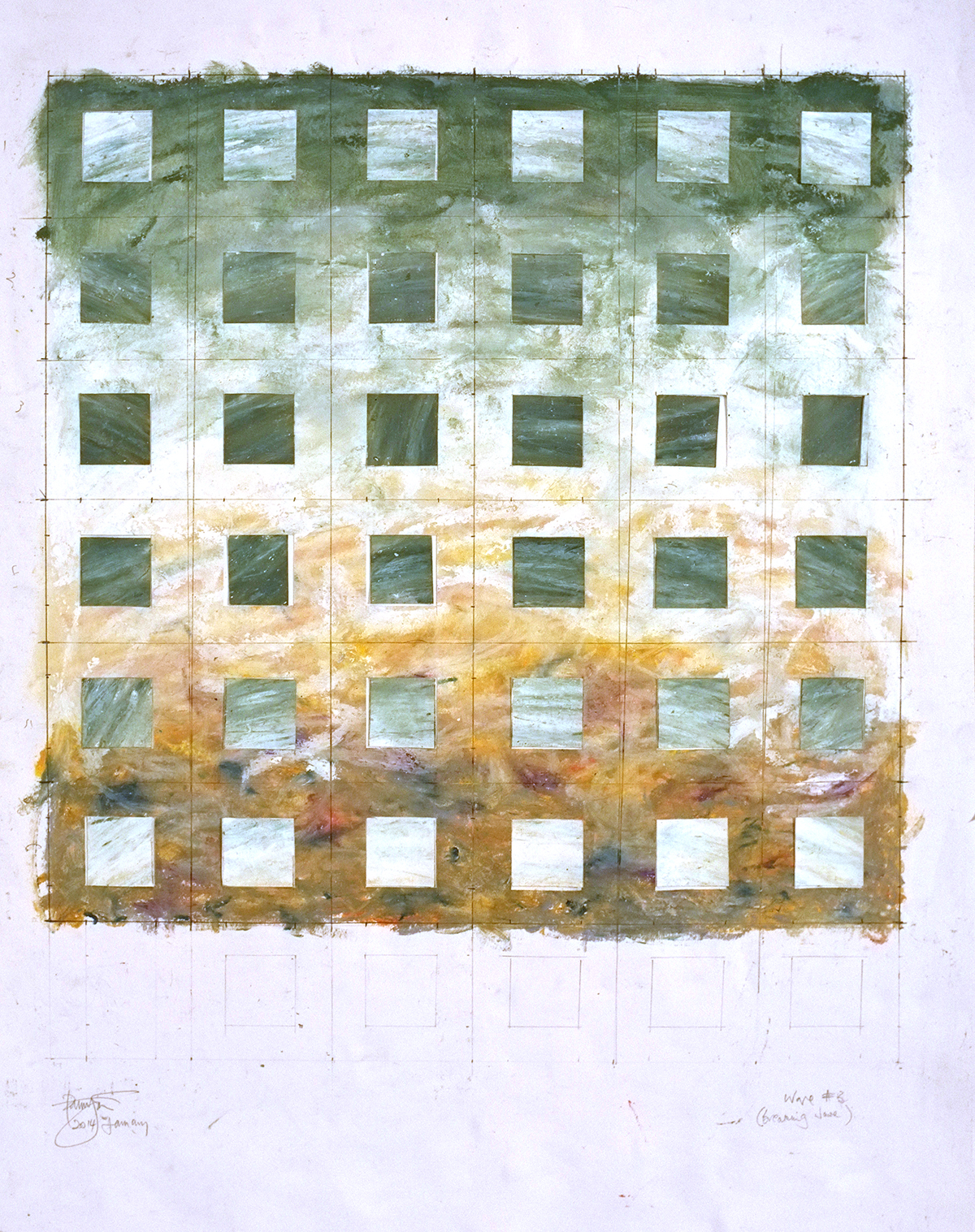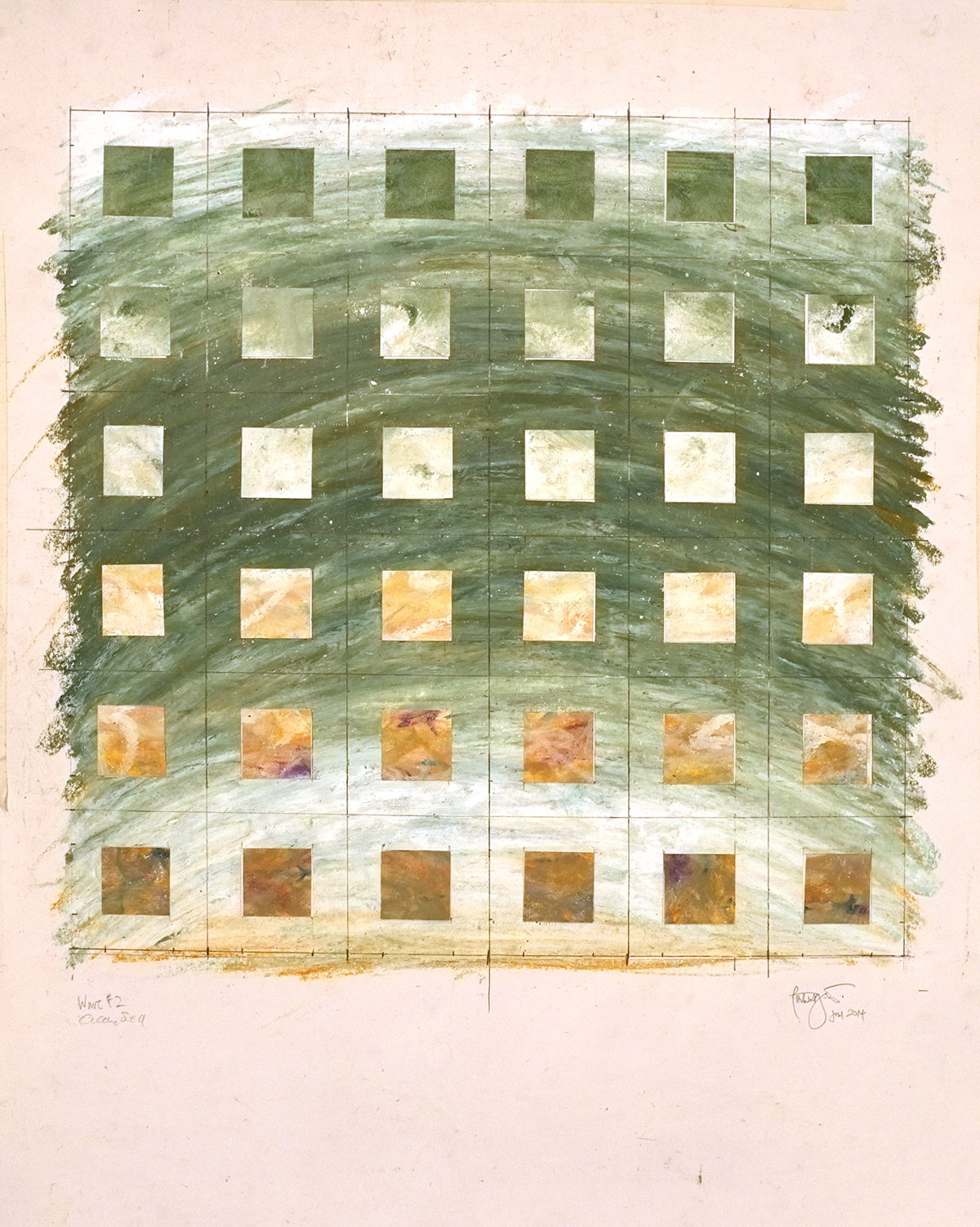The Impressionists went to the south of France for the light. English artists found their vision at home, Constable in Suffolk, Turner in Sussex. Sussex is now my ‘home ground’ and the light is startling in its clarity, cleansed by sea breezes and enhanced by wide horizons of the Downs and the seascape. I am still daily in wonder of having landed on such a wonderful piece of coastline, and my regular walk into the village, (although Seaford is a small town really) is still a delight.
Trying to capture the colour and movement of the sea through drawings is proving great fun, and using these drawings to work towards painting is rewarding. This week has seen me move from practising my scales to beginning to process the visions captured on paper into something more thoughtful on canvas. The myth making process is a permanent part of generating paintings for me, but the challenge of canvas is quite different.
I used drawing processes to capture wave movement, the surging swell of a wave with the foam of the crest echoed in the foam and spume it leaves as it breaks and sucks the shingle back into the sea. I’m working a mixture of oil pastels and larger oil bars. The oil bars are old stock I’ve had knocking around for over ten years and unlike pastels they seem to deteriorate, but have much more of a pigment punch. Using the pastels to lay a base then working the bars in punchy small marks across the top of the layered colour seems to work well.
If the first drawing tried to capture the swell of a wave through the movement my arm and directionality of the mark, the second drawing tried to get to grips with the explosion of the wave on the shingle and the mix of colours in the pebbles. There is a whole gamut of earth colour there, from black flints through a spectrum of earths to the white of the chalk from the cliffs. Changing the way the mark is made helps to work the paint in an almost expressionist manner.
The interlocking of two waves – the curving power of one locked into the breaking of the second – is really an expression of both being one continuum of the same wave, a wave in turn being realisation of the perpetual motion of the sea contained and constrained by shoreline. Using the grid of square to do this creates colour and light relationships within a stable framework, the colour relationships being drawn from the natural colour. I never understand why designers use ‘colour counsellors’ when a day drawing can give such a wealth of colour relationship to play with, each unique to themselves.
The sea can be violent and that violence takes the lives of the unwary. In Britain we have used the violence of the sea to protect us, the Channel being the first line of defence for many years, supplemented once by a Navy, which we now only have as a token of past power. The sea off Seaford is a container, holding many wrecks and the remains of many people never recovered. It is exhilarating to walk the shoreline as wind and tide drives the waves ashore. That exhilaration is part of what drives men to challenge the sea, youths to challenge breakers.
I walk the shore with a smile most of the time, a smile and a camera. Now I find when I work in the studio that smile returns. It’s great to have such stimulae to be creative.


